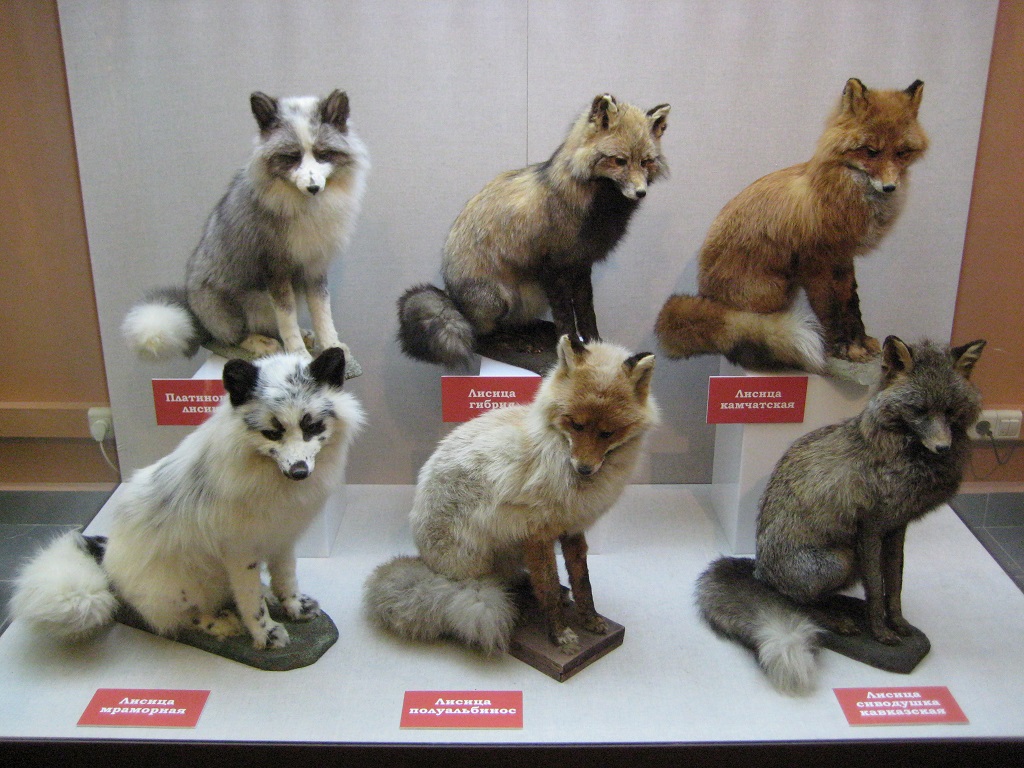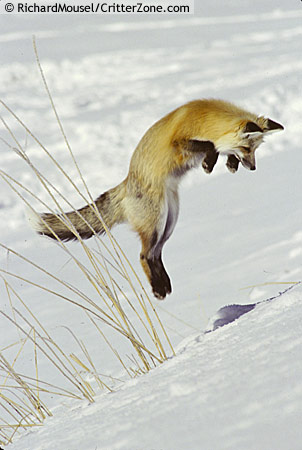While the stop-motion film is set in nowhere particular, the wild red fox can be found throughout most of Wisconsin and Canada and as far south as the northern half of Florida. It prefers habitats with open country and dependable cover, but can also be found living in suburbs and large city parks. The red fox is quite adaptable and can survive in these types of habitats as long as access to water and forested habitat edges are abundant. They live alone most of the year until pairing up to spend the breeding season together.
 The red fox is known for its beautiful reddish to reddish-orange coat and black stocking legs. But did you know that there are also other color variants of the red fox? Two of the other common colors are the "cross" and "silver" variant. The "cross" variant is yellowish to grayish in color but has a darker black cross of color extending between the shoulders and along the back. The "silver" variant (Kristofferson Silverfox in the film) is blackish in color with whitish frost on the tips of the hairs which give it a silver appearance. Their pointy triangular ears are black tipped and can pinpoint mice running in a field at quite a distance. Their long, bushy white-tipped tails are prized by hunters and collectors alike.
The red fox is known for its beautiful reddish to reddish-orange coat and black stocking legs. But did you know that there are also other color variants of the red fox? Two of the other common colors are the "cross" and "silver" variant. The "cross" variant is yellowish to grayish in color but has a darker black cross of color extending between the shoulders and along the back. The "silver" variant (Kristofferson Silverfox in the film) is blackish in color with whitish frost on the tips of the hairs which give it a silver appearance. Their pointy triangular ears are black tipped and can pinpoint mice running in a field at quite a distance. Their long, bushy white-tipped tails are prized by hunters and collectors alike.
 Red foxes are quite opportunistic feeders, feeding on everything from mammals to invertebrates to nuts. They are solitary hunters and prefer to eat small mammals such as rabbits, squirrels and voles. They are also excellent hunters and kill after a quick pounce on their prey and a sharp bite to its neck. They typically wander an average of 5 miles a night in search of food and have a home range of about 250 - 1,200 acres.
Red foxes are quite opportunistic feeders, feeding on everything from mammals to invertebrates to nuts. They are solitary hunters and prefer to eat small mammals such as rabbits, squirrels and voles. They are also excellent hunters and kill after a quick pounce on their prey and a sharp bite to its neck. They typically wander an average of 5 miles a night in search of food and have a home range of about 250 - 1,200 acres.
The red fox switches to its underground life in a modified woodchuck den in early winter. Breeding happens sometime between January and March and will result in the female giving birth to about five pups fifty or so days later. The pups will start playing around 5 weeks of age and will start eating meat at around 8 weeks. Just like Foxy, the wild fox is a good father. He contributes quite a bit to parental care, bringing mice to young, guarding young outside of the den and assisting them on their first hunting adventures. The young males will leave the den first in early Fall. Young females will disperse shortly thereafter, but stay close to the den during their first winter. Both the male and female red fox become sexually mature and mate by their first winter.
Bobcat, coyote and lnyx are the biggest threat to adult red foxes. Inattentive young foxes are also hunted by large hawks and owls, but surprisingly, red foxes are adept at evading the gray wolf. The average life span of a red fox is only one year, but five to six year old adults are common in the wild.
 Fun Facts:
Fun Facts:
Pew! A red fox den can often be discovered because of its strong odor of urine which the male uses to mark and defend its territory.
Faster than a speeding bullet?! Well, not quite. The long, slender body of a red fox is built for running though and can reach speeds of up to 30 miles per hour.
Poor mangy mongrel. The red fox is incredibly susceptible to Sarcoptic mange which can actually shorten its life.
The nose knows! A fox's sense of smell is acute and is used in conjunction with its keen sense of hearing to locate food.
Home is where the diversity is? The size of a fox's home range is determined by the diversity of the habitat. The greater the diversity of its habitat, the smaller the range will be and vice versa.
Share your red fox story with us! Red foxes are commonly spotted in Riverside Park and along the Hank Aaron State Trail. Come and spot one on your own.
* This article was written using information found on the www4.uwsp.edu website and the Mammals of the Great Lakes Region book written by Allen Kurta.





